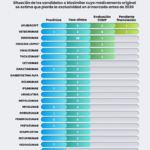Biological drugs, as opposed to drugs obtained by chemical synthesis, are highly complex molecules that require a living organism for their production. Given its biological nature, there is a certain structural variability inherent to any biologic, as opposed to the homogeneity of chemically synthesized medicines. That is why reproducing an original biological medicine and demonstrating the equivalence between the two, that is, creating a biosimilar, requires many more studies than those needed to produce a generic (replication of a synthetic medicine).
El development of a biosimilar It is therefore significantly more extensive and complex than the development of a generic and that affects the investment that is needed. It should be noted that the time to develop a biosimilar fluctuates between six and twelve years and the cost of research and development, which can reach 200 millones de euros. Only the laboratories that have carried out these developments know precisely the cost in time and money that they have required.
In more detail, the process to produce a biosimilar begins with the development of an equivalent host cell clone, a step that can involve up to a year and a half of research. Added to this is the optimization of the process and purification to reach the necessary quality standard according to regulatory standards, which may take another year and a half. An essential aspect is the comparison of the physicochemical characteristics and biological activity in the early stages of development.
Likewise, The authorization of these medicines, unlike others, is centralized in the hands of the European Medicines Agency (EMA). and requires preclinical (usually) and clinical trials in patients that can take up to four years in time. Added to these trials is the implementation of a special active pharmacovigilance system.
All of this means that the reduction in the price of the biosimilar with respect to the original cannot reach the discounts that do occur with the generic drugs.




